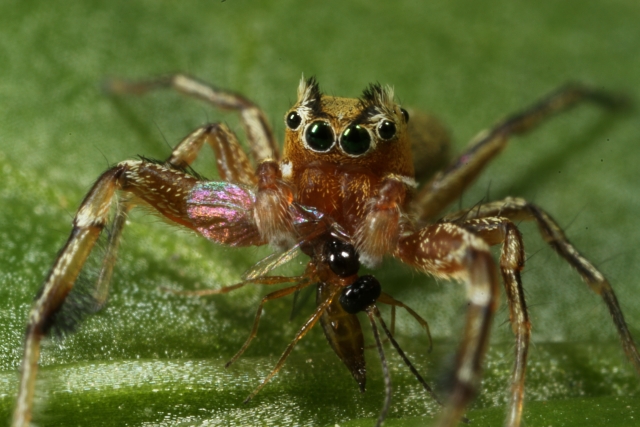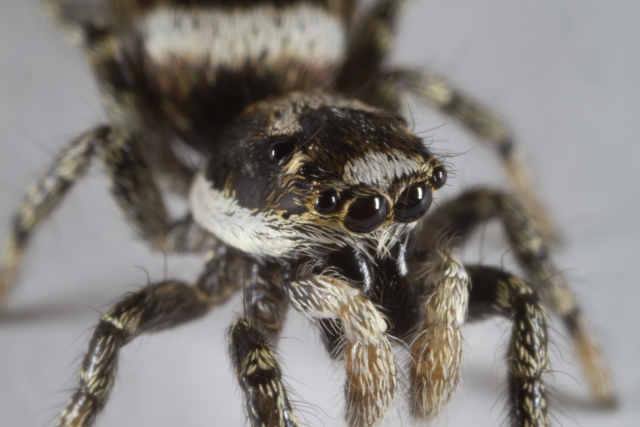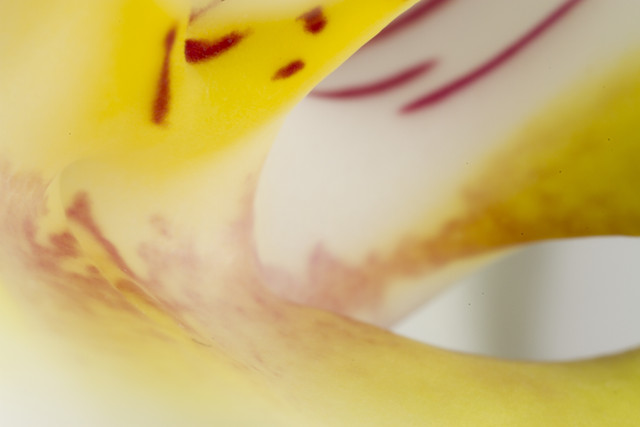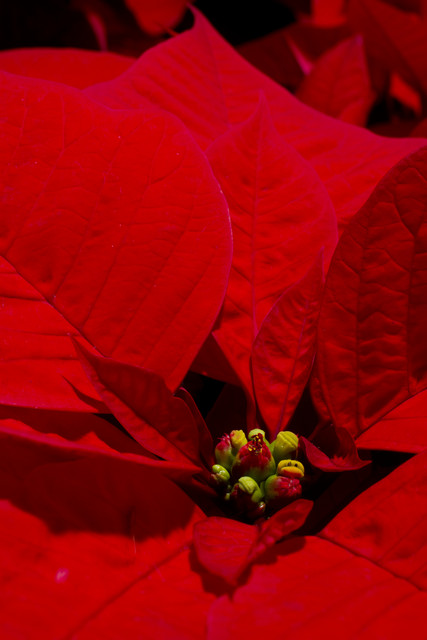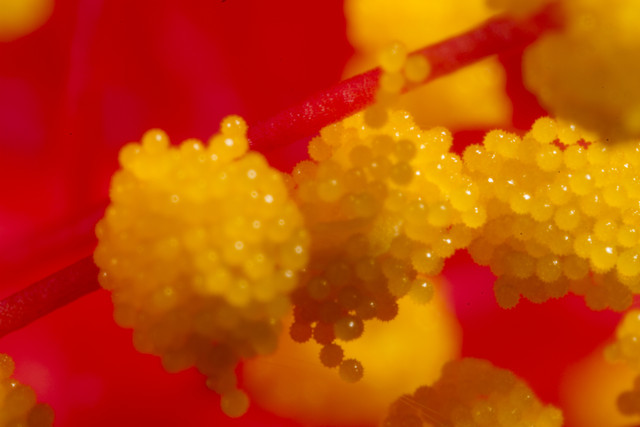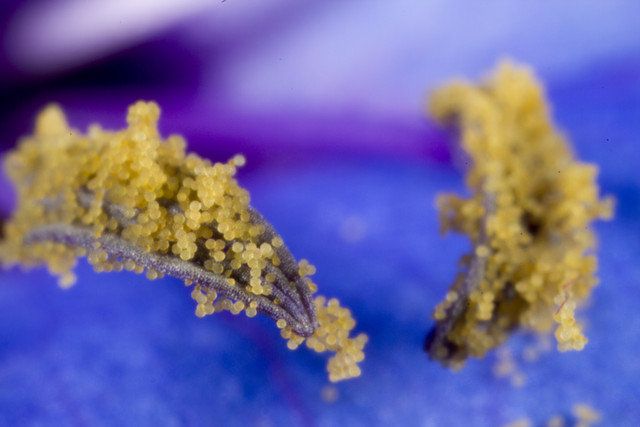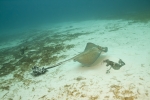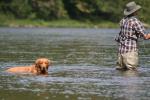supermacro
Jumping Spider with Snack (part 1)
ktuli — Fri, 06/08/2012 - 06:56
Technical Data: Canon EOS 7D, Canon MP-E 65mm f/2.8 1-5x Macro, 1/260 sec at f/16. Canon Macro Twin Lite MT-24EX in ETTL mode. ISO 160.
More to come later...
- Bill
More Jumping Spider with Blue Background
ktuli — Thu, 04/19/2012 - 19:53
Just stopping by to share an assortment of that jumping spider I shot on a blue background...
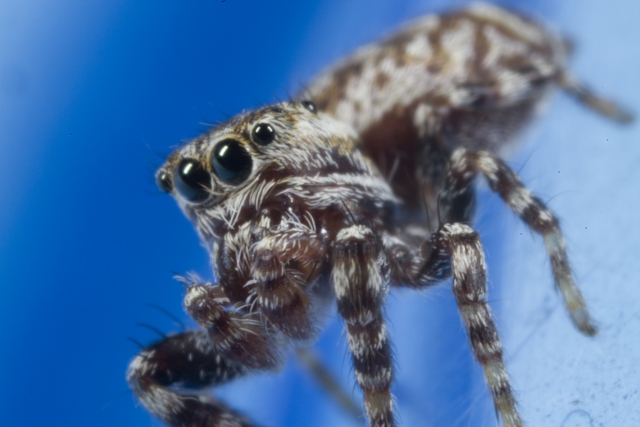 |
||
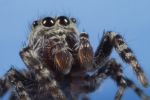 |
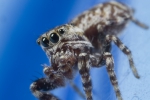 |
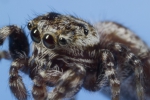 |
Technical Data: Canon EOS 7D, Canon MP-E 65mm f/2.8 1-5x Macro, 1/160 sec at f/16. Canon Macro Twin Lite MT-24EX in ETTL mode. ISO 100. RAW processing in Adobe Camera Raw.
- Bill
Wake Up, Spider
ktuli — Sun, 03/25/2012 - 20:25
I found this little (again - in the 5mm or smaller size range) spider on my way home from work on Friday. I brought him home and moved him to a slightly larger container. He quickly decided it was time to take a nap, and make a small cocoon type web on the lid of the container and curled up to get some rest.
Later, when I went to take some photos, I thought it would be nice to get him still in the little blanket of silk. Unfortunately, he quickly woke up and was just climing out of his little hammock when I managed to fire off this one shot.
I really like this pose as it is different from what you would normally see for a spider. I'm a bit disappointed that the very top of the spider's head got cut off by the top of the frame. Also, the depth of field is pretty shallow (f/8 as opposed to the f/16 I usually shoot with this lens), and from this profile angle makes very little of the spider in focus. I also really like the blue background, and may have to try and use it more often and find some others that work well too. On top of that, this shot is at 5x magnification, so all things considered, I am pretty pleased with it.
Technical Data: Canon EOS 7D, Canon MP-E 65mm f/2.8 1-5x Macro, 1/40 sec at f/8. Canon Macro Twin Lite MT-24EX in ETTL mode. ISO 100. RAW processing in Adobe Camera Raw.
I have a few more to share of this spider, but I promise to take a short break from the spiders here and post a few I took at Powdermill Nature Reserve.
- Bill
Cool Spider
ktuli — Sat, 03/17/2012 - 19:59
So I tried something new with this little guy. I've read that if you put a spider or insect in the fridge, it slows them down and makes it easier to get photos of them. I don't know if I was doing it wrong or what, but I would put this little fella in the fridge for about 10-15 minutes and it would only slow him down for a second or two before he was back up and running around.
Additionally, this shot was done at 5x magnification, so while the shots below were cropped, this one is as it was in camera...
Technical Data: Canon EOS 7D, Canon MP-E 65mm f/2.8 1-5x Macro, 1/250 sec at f/13. Canon Macro Twin Lite MT-24EX in ETTL mode. ISO 100. RAW processing in Adobe Camera Raw.
Enjoy!
- Bill
Snowflakes
ktuli — Sun, 02/12/2012 - 18:50
I had thought about heading out today to see about finding a place to try some winter wildlife photography - particularly looking for deer in the snow. However, it was just far too cold try do that, so I thought about what I could shoot around here.
I still headed out into the cold, but this time with the MP-E 65mm to see whether I could get any super macro shots of some snowflakes. I'd seen something somewhere (I can't remember where) of photos of individual snowflakes, so I figured I would see if I could do the same.
 |
 |
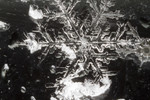 |
 |
||
Technical Data: Canon EOS 7D, Canon MP-E 65mm f/2.8 1-5x Macro, 1, 10, 3.2 sec respectively at f/16. ISO 400. RAW processing in Adobe Camera Raw.
First - finding individual snowflakes is much more difficult than you would think. Any time I would try and look where there was any noticeable amount of snow, it was nearly impossible to distinguish individual flakes. I ended up figuring out that I could find some on the windows of Anya's truck. Even there, I only managed to find maybe half a dozen at a time. And if that wasn't enough of a challenge, I could literally watch the flakes melt in front of me once I did find them.
When I started, I was using my MT-24EX dual macro flash, but I found it was causing far too much in terms of reflections, so I turned it off and went to long exposure times. As you can see, the longest of which went all the way up to 10 seconds.
All of these shots were done at 5x magnification, so dealing with focus was extremely challenging. Anya bought me a macro focusing rail for my birthday, which greatly helped, but at 5x magnification, the slightest movement makes a huge difference in the focus.
This is definitely another subject I'll have to try again in the future - it is just so cool to see such an intricate and unique subject at such magnifications.
- Bill
Super Macro: Blue Jay Feather
ktuli — Tue, 02/07/2012 - 20:04
This year, I started a "Project 52" to keep myself motivated to take photos on a regular basis. I've already hit some rough times getting good ideas of things to shoot, but last week I came up with the idea to shoot a blue jay feather with my new super-macro lens - the Canon MP-E 65mm.
The results were not nearly as good as I wanted, and I almost dumped the whole lot of them. Instead, I kept them and I will use them in the future to refer back to in order to correct the mistakes I made.
 |
 |
 |
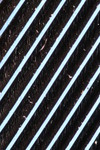 |
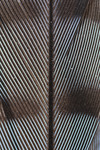 |
Technical Data: Canon EOS 7D, Canon MP-E 65mm f/2.8 1-5x Macro, bottom-left with Kenko Teleplus PRO 300 "DG" AF 2x Teleconverter, top-left with Canon Speedlite 580EX II, others with Canon Macro Twin Lite MT-24EX in ETTL mode. Assorted exposures. ISO 100.
The shot in the bottom-left is actually a 10x magnification as I had my 2x teleconverter combined with the MP-E 65 set to 5x magnification. The clarity on it isn't as good as I would have liked, so I'm sure I will be retrying that at some point as it certainly is an interesting shot.
- Bill
Orchid Abstract
ktuli — Sun, 01/15/2012 - 21:58
One of the things that happen when you start working with macro photography is that you often lose perspective and cross over into a realm of abstract. Magnifying things we don't normally see, and some that we can't even see with the naked eye can certainly put someone in an unfamiliar, alien world.
To me, at least, that is part of the fun...
Technical Data: Canon EOS 7D, Canon MP-E 65mm f/2.8 1-5x Macro, 1/250 sec at f/16. Canon Macro Twin Lite MT-24EX in ETTL mode. ISO 100. RAW processing in Adobe Camera Raw.
Obviously, this is a very close-up shot of an orchid. The way the light from the flash and the intentional "over"-exposure produce an unworldly realm - almost like some glowing cave to my eyes - really seems to draw me into this photo.
- Bill
Super-macro Pointsetta
ktuli — Tue, 01/10/2012 - 21:42
At one point while trying out my new lens, I decided to take a series of shots with the different (albeit not all 5) magnification levels provided by the MP-E 65mm lens. In this case, I worked with the central flowering parts of a pointsetta....
Technical Data: Canon EOS 7D, Tokina AT-X M35 Pro DX AF 35mm f/2.8 Macro 1:1, 1/100 sec at f/16. Canon Speedlight 580EX II flash in auto mode and wireless control. ISO 100. RAW processing in Adobe Camera Raw. Phipps Conservatory, Pittsburgh, PA.
No - that photo is not a macro shot - I'm just providing it as a bit of reference. Some folks believe the red leaves (called bracts) are the flowering parts of the pointsetta - that's untrue. Some folks know that and believe that pointsettas simply don't have flowers - that too is untrue. What they actually have are fully male or female flowers (a single plant will have both), and they are contained in a cyathium - a flesh bulb similar to how a fig grows. So in the series below, we start with a 1:1 magnification of the cyathium cluster at the center of the plant, then move progressively to a 5:1 magnification of the (if I am getting my pointsetta anatomy correct) tops of the male flowers with the pollen.
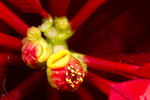 |
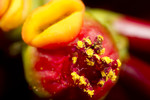 |
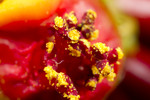 |
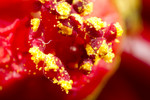 |
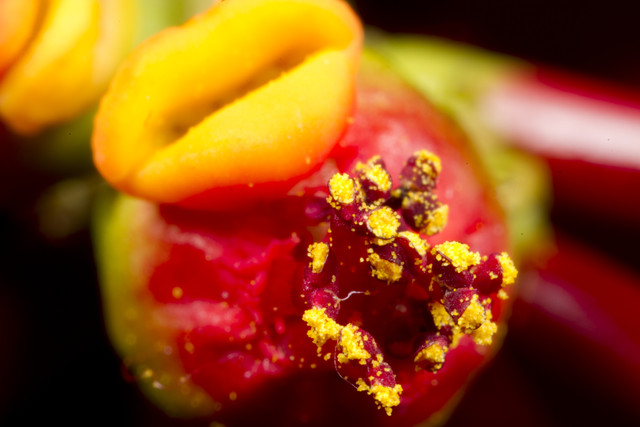 |
|||
Technical Data: Canon EOS 7D, Canon MP-E 65mm f/2.8 1-5x Macro, 1/250 sec at f/16. Canon Macro Twin Lite MT-24EX in ETTL mode. ISO 100. RAW processing in Adobe Camera Raw.
I think when dealing with this level of magnification, it is very easy to lose all sense of what it is you are looking at. Having the entire series of photos going through the magnification levels certainly helps to put things into a bit of perspective and provide some reference points to go on.
I'm really liking this new lens...
- Bill
More Grains of Pollen
ktuli — Sun, 01/08/2012 - 21:07
I really should be posting more often, but I'm still kind in lazy mode from the holidays. Today is my last day off before starting my new job (yay!), so maybe getting back to work will start getting me back into a routine and have more frequent posts again. For now, enjoy another shot of grains of pollen... this time on a hibiscus flower.
Technical Data: Canon EOS 7D, Canon MP-E 65mm f/2.8 1-5x Macro, 1/250 sec at f/16. Canon Macro Twin Lite MT-24EX in ETTL mode. ISO 100. RAW processing in Adobe Camera Raw.
I think the spiky ball shape on this pollen is pretty impressive. I may have to collect a series of flower pollen shots showcasing all of the different shapes they come in.
- Bill
Grains of Pollen
ktuli — Wed, 01/04/2012 - 08:36
I've taken some super macro photos of a pollen stamen before, but that was before I owned the Canon MP-E 65mm f/2.8 1-5x Macro lens.
This lens is a serious macro lens, and no other lens out there comes close to what it can do - which is to magnify things up to 5 times life size. Most true macro lenses will magnify up to life size (or 1:1), but the MP-E 65 can go way beyond that, allowing for magnification from life size (1:1) up to 5 times life size (5:1). I will get into more detail about that at a later date when I do a more thorough write-up of the lens, but for now that means you get to see what individual grains of pollen look like....
Technical Data: Canon EOS 7D, Canon MP-E 65mm f/2.8 1-5x Macro, 1/250 sec at f/16. Canon Macro Twin Lite MT-24EX in ETTL mode. ISO 100. RAW processing in Adobe Camera Raw.
Unfortunately, I did not record what magnification that shot was taken at, and I haven't figured out how to determine that after the fact yet. Regardless, that's still a highly magnified view of pollen - my guess is somewhere between 3-5x life size (probably closer to 5).
Stay tuned for more super macro photos...
- Bill

